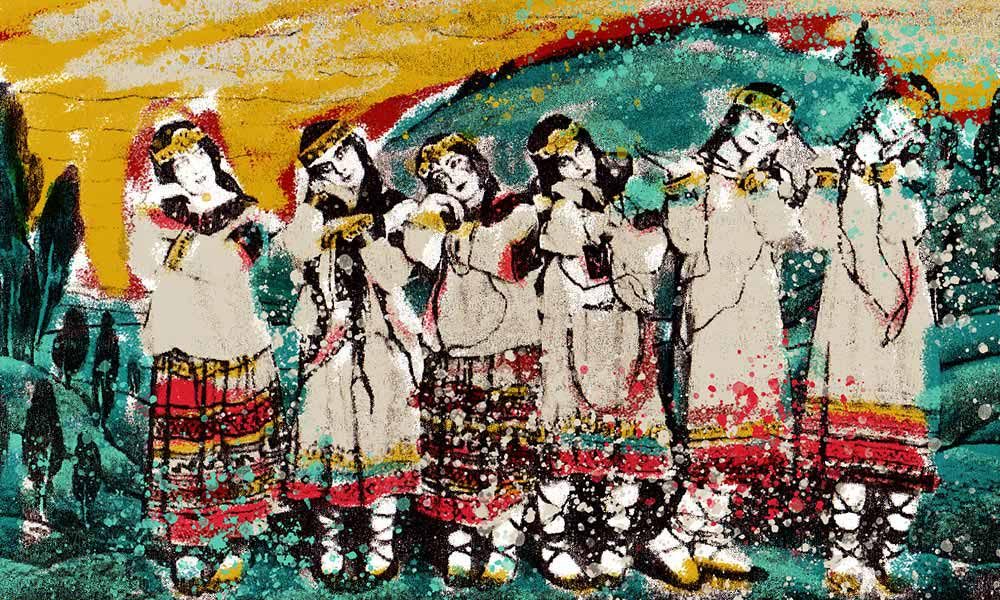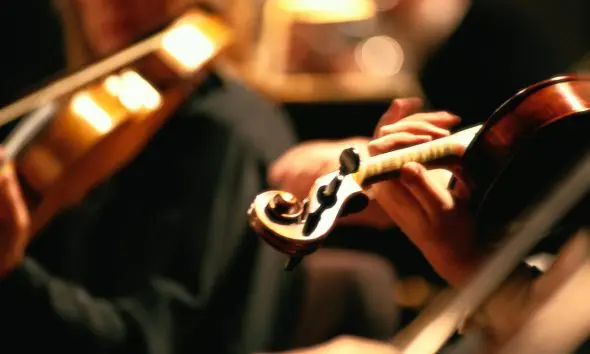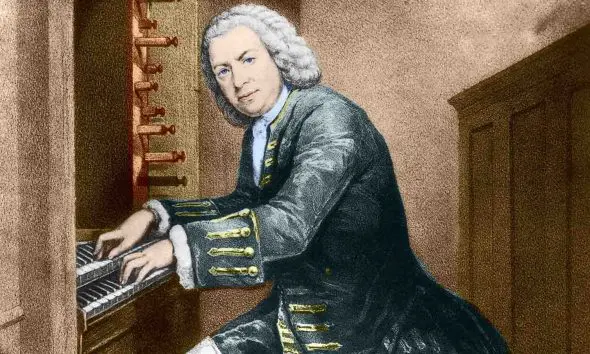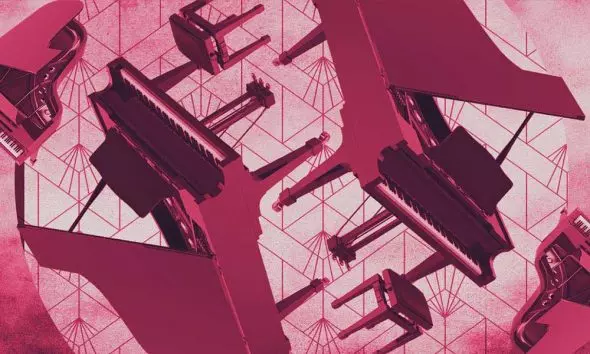The Riot At Stravinsky’s ‘Rite Of Spring’ Premiere
The premiere of Stravinsky’s ‘The Rite of Spring’ caused a riot and is perhaps the most notorious scandal in the history of music.

The premiere of Igor Stravinsky’s The Rite of Spring (Le Sacre du Printemps) is perhaps the most notorious scandal in the history of music. The ballet was first performed by Diaghilev’s Ballets Russes at the Theatre du Champs-Élysées in Paris on 29 May 1913 and famously caused a riot. Many people in the audience were so outraged by Stravinsky’s avant-garde score, and Nijinsky’s choreography, that they thought it seemed like the work of a madman.
Listen to our recommended recording of Stravinsky’s The Rite of Spring (Le Sacre du Printemps), performed by the Los Angeles Philharmonic conducted by Esa-Pekka Salonen, on Apple Music and Spotify and scroll down to find out what happened during the notorious premiere.
The riot at Stravinsky’s Rite of Spring premiere
Stravinsky was a young, virtually unknown, composer when Diaghilev recruited him to create works for the Ballets Russes. The Rite of Spring was Stravinsky’s third project for the Ballets Russes after The Firebird (1910) and Petrushka (1911). The idea for the work came to Stravinsky in 1910 when he was composing The Firebird, but he put the project aside for a year to write Petrushka, before immersing himself in The Rite of Spring in the summer of 1911.
Stravinsky’s inspiration was still Russian folk tradition – after various primitive rituals celebrating the advent of spring, a young girl is chosen as a sacrificial victim and dances herself to death. Musically his avant-garde score for The Rite of Spring contradicted every rule. The score contains many novel features for its time including experiments in tonality, metre, rhythm, stress and dissonance, i.e. combinations of notes which don’t make normal harmonic sense. The sounds are often deliberately harsh, right from opening Lithuanian folk melody, and the music is rhythmically complex in a completely unprecedented way. At a deeper level the music negates the very thing that for most people gives it meaning: the expression of human feelings. As Stravinsky put it, “There are simply no regions for soul-searching in The Rite of Spring.”
“I was guided by no system whatever in Le Sacre du Printemps”
“I was guided by no system whatever in Le Sacre du Printemps,” wrote Igor Stravinsky in 1961. “I had only my ear to help me; I heard and I wrote what I heard. I am the vessel through which Le Sacre passed.”
Then there was the dance choreographed by Nijinsky which, according to some observers, was what really shocked the audience at The Rite of Spring’s premiere. Stravinsky described the dancers as a row of “knock-kneed and long-braided Lolitas jumping up and down” who jerked rather than danced. Their heavy steps were a world away from traditional elegant ballet. Stravinsky said the audience, “came for Scheherazade or Cleopatra, and they saw Le Sacre du Printemps. They were very shocked. They were very naïve and stupid people.”
Contrary to popular belief it was not just the shock of hearing the music and the choreography that caused the riot at The Rite of Spring’s premiere. At that time a typical Parisian ballet audience consisted of two diverse groups: the wealthy and fashionable set, who would be expecting to see a traditional performance with beautiful music, and a ‘Bohemian’ group who were eager for something new. Conductor Pierre Monteux believed that the trouble began when these two groups, the pro and con factions, began attacking each other, and the orchestra. He recalled, “Everything available was tossed in our direction, but we continued to play on.”
“The work of a madman …sheer cacophony”
By the time the first part of the ballet was over the police had already arrived and around 40 people had been arrested. Through all the disturbances the performance continued without interruption. The unrest receded significantly during Part II and at the end there were several curtain calls. “The work of a madman … sheer cacophony,” wrote the composer Puccini.
In his autobiography Stravinsky writes that the derisive laughter that greeted the first bars of the ‘Introduction’ to The Rite of Spring at the premiere disgusted him, and that he left the auditorium to watch the rest of the performance from the stage wings.
A year later, when the score was performed in Paris as a concert piece for the first time, Stravinsky was carried on the shoulders of his fans in triumph and there were huge ovations. Although designed as a work for the stage commentators broadly agree that The Rite of Spring has had a greater impact in the concert hall.
“The most important piece of music of the 20th century”
The Rite of Spring caused a scandal at its premiere in 1913 but is now widely regarded as one of the most influential musical works of the 20th century, a seminal work of modernism that boldly rejected the ordered harmonies and comfort of traditional composition. Leonard Bernstein described The Rite of Spring as, “The most important piece of music of the 20th century.”
“The Rite of Spring changed musical history”
In the following interview Esa-Pekka Salonen, the conductor of our recommended recording of Stravinsky’s The Rite of Spring (Le Sacre du Printemps) notes, “The Rite of Spring is a kind of a bible – it is a piece that has influenced me hugely …The Rite of Spring changed musical history.”
Recommended Recording
Our recommended live recording of Stravinsky’s The Rite of Spring (Le Sacre du Printemps ) is performed by the Los Angeles Philharmonic conducted by Esa-Pekka Salonen at the Walt Disney Concert Hall.
“I’m not sure …that I’ve ever heard so much of The Rite’s instrumental detail revealed so intricately: the interweaving woodwind of the introduction are exquisitely, indeed eerily sifted …” observed BBC Music Magazine.
“Stravinsky’s shattering Rite has rarely been presented with such a feeling for its orchestral originality, thanks to the magnificent recording,” noted Apple Music.
Our recommended recording of Stravinsky’s The Rite of Spring (Le Sacre du Printemps), performed by the Los Angeles Philharmonic conducted by Esa-Pekka Salonen, can be bought here.
Listen to the best of Stravinsky on Apple Music and Spotify.




